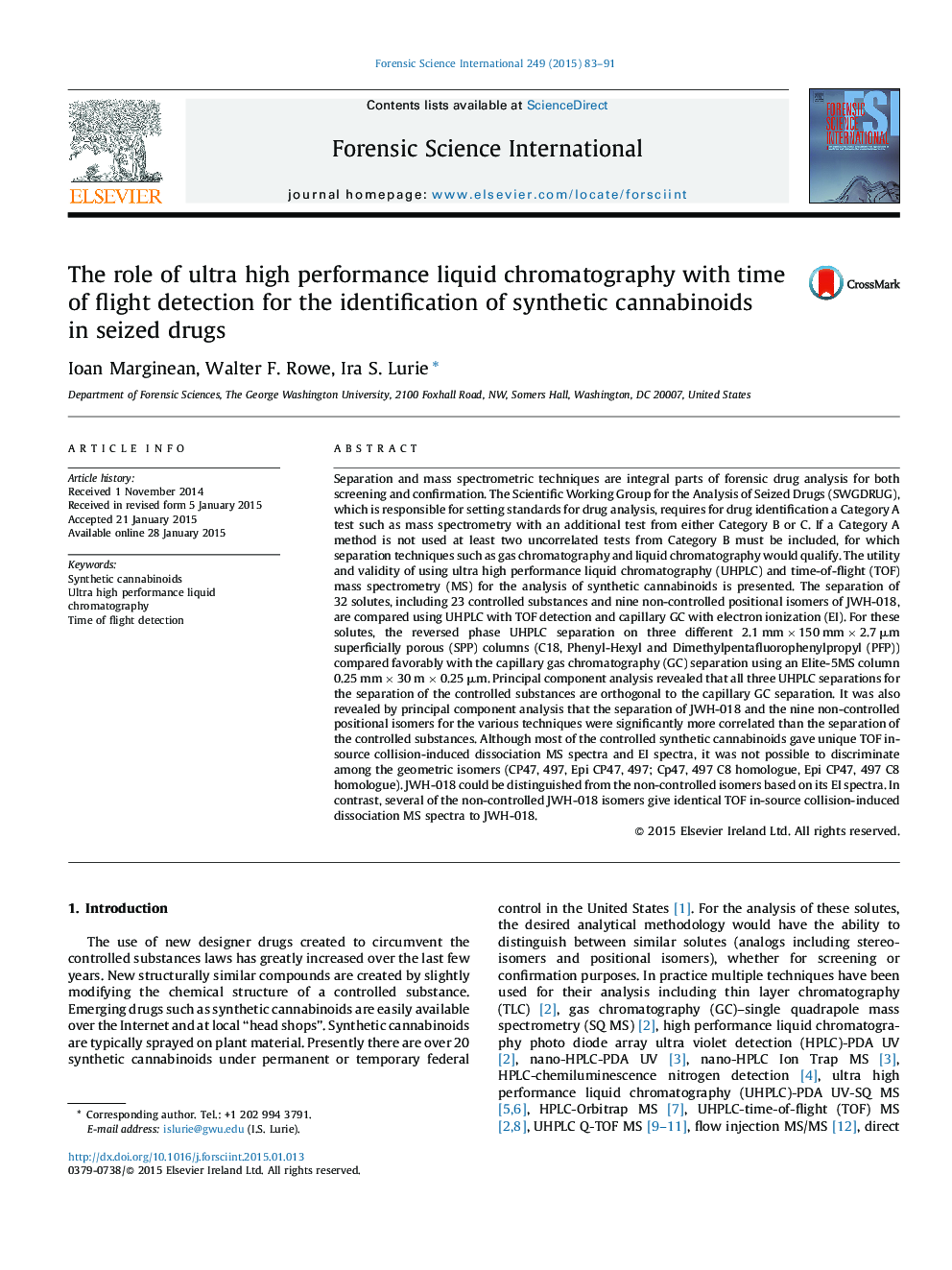| کد مقاله | کد نشریه | سال انتشار | مقاله انگلیسی | نسخه تمام متن |
|---|---|---|---|---|
| 95409 | 160429 | 2015 | 9 صفحه PDF | دانلود رایگان |
• The analysis of synthetic cannabinoids was compared by UHPLC and GC.
• Principal component analysis showed orthogonality of reversed phase UHPLC and GC.
• Accurate masses measured are within 5 ppm of the theoretical mass.
• EI MS is preferred to ES+ CID MS for distinguishing positional isomers.
• UHPLC–MS is superior to GC–MS for screening purpose.
Separation and mass spectrometric techniques are integral parts of forensic drug analysis for both screening and confirmation. The Scientific Working Group for the Analysis of Seized Drugs (SWGDRUG), which is responsible for setting standards for drug analysis, requires for drug identification a Category A test such as mass spectrometry with an additional test from either Category B or C. If a Category A method is not used at least two uncorrelated tests from Category B must be included, for which separation techniques such as gas chromatography and liquid chromatography would qualify. The utility and validity of using ultra high performance liquid chromatography (UHPLC) and time-of-flight (TOF) mass spectrometry (MS) for the analysis of synthetic cannabinoids is presented. The separation of 32 solutes, including 23 controlled substances and nine non-controlled positional isomers of JWH-018, are compared using UHPLC with TOF detection and capillary GC with electron ionization (EI). For these solutes, the reversed phase UHPLC separation on three different 2.1 mm × 150 mm × 2.7 μm superficially porous (SPP) columns (C18, Phenyl-Hexyl and Dimethylpentafluorophenylpropyl (PFP)) compared favorably with the capillary gas chromatography (GC) separation using an Elite-5MS column 0.25 mm × 30 m × 0.25 μm. Principal component analysis revealed that all three UHPLC separations for the separation of the controlled substances are orthogonal to the capillary GC separation. It was also revealed by principal component analysis that the separation of JWH-018 and the nine non-controlled positional isomers for the various techniques were significantly more correlated than the separation of the controlled substances. Although most of the controlled synthetic cannabinoids gave unique TOF in-source collision-induced dissociation MS spectra and EI spectra, it was not possible to discriminate among the geometric isomers (CP47, 497, Epi CP47, 497; Cp47, 497 C8 homologue, Epi CP47, 497 C8 homologue). JWH-018 could be distinguished from the non-controlled isomers based on its EI spectra. In contrast, several of the non-controlled JWH-018 isomers give identical TOF in-source collision-induced dissociation MS spectra to JWH-018.
Journal: Forensic Science International - Volume 249, April 2015, Pages 83–91
